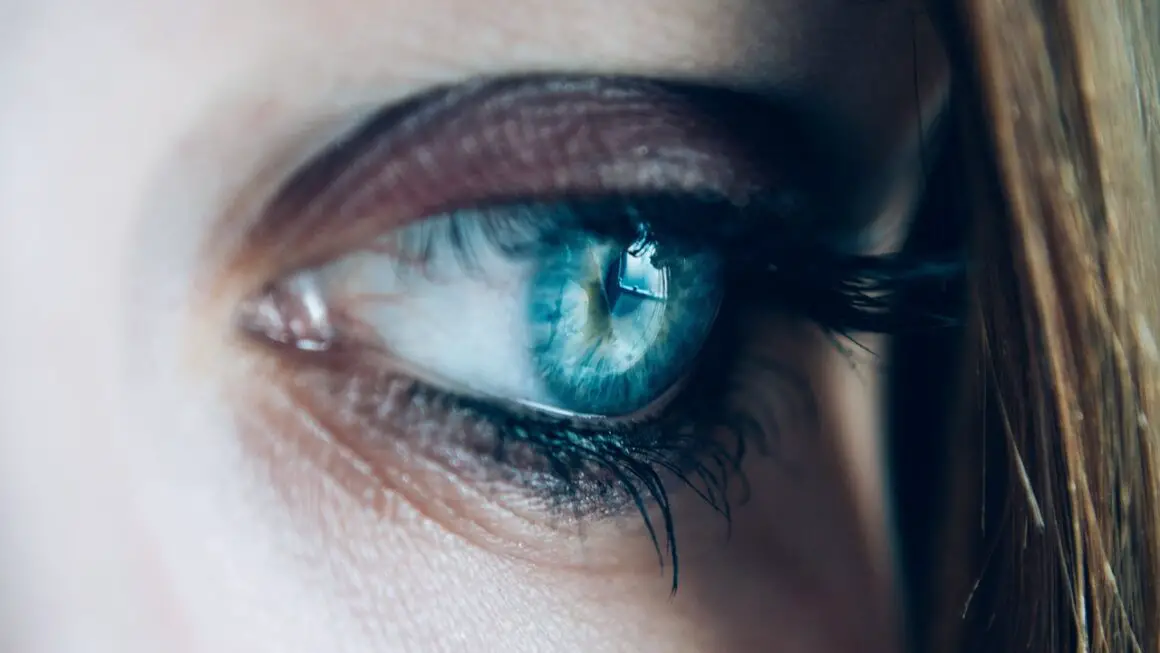The world appears vibrant and clear, but are you truly seeing it at its best? Many people take their vision for granted, unknowingly living with uncorrected vision problems. Regular eye tests are more than just checking if you need glasses; they are a crucial part of maintaining overall health and detecting potential eye diseases early on. This comprehensive guide will illuminate the importance of eye tests, what they involve, and how often you should schedule one.
Why Regular Eye Tests Are Essential
Preserving Your Vision and Eye Health
Eye tests are not solely about getting a prescription for glasses or contacts. They play a vital role in preserving your vision and identifying potential eye diseases in their early stages, when treatment is often most effective.
- Early Disease Detection: Conditions like glaucoma, macular degeneration, and cataracts often develop without noticeable symptoms. An eye test can detect these issues before they cause irreversible damage. For instance, glaucoma affects millions worldwide, often without people knowing until significant vision loss has occurred. Regular testing can identify it early, allowing for management to slow its progression.
- Vision Correction: Correcting refractive errors like nearsightedness (myopia), farsightedness (hyperopia), and astigmatism can significantly improve your quality of life, making tasks like driving, reading, and working on a computer much easier and more comfortable.
- Overall Health Indicator: Surprisingly, an eye exam can reveal signs of systemic diseases like diabetes, high blood pressure, and even certain types of tumors. The blood vessels in the retina provide a unique window into the body’s overall health.
Impact on Daily Life
The benefits of good vision extend far beyond simply seeing clearly. They impact nearly every aspect of daily life.
- Improved Academic Performance: For children, clear vision is crucial for learning and development. Undetected vision problems can lead to difficulties in reading, writing, and concentrating in school. A study showed that children with vision problems are significantly more likely to struggle academically.
- Enhanced Workplace Productivity: Clear vision is essential for many jobs, especially those involving computer use or detailed work. Correcting vision problems can reduce eye strain, headaches, and fatigue, leading to increased productivity and job satisfaction.
- Safer Driving: Good vision is paramount for safe driving. An eye test can ensure that you meet the required vision standards and that any vision problems that could impair your ability to drive safely are addressed.
- Better Quality of Life: Overall, good vision improves your quality of life, allowing you to enjoy activities such as reading, watching movies, and participating in sports to the fullest.
What to Expect During an Eye Test
An eye test is a comprehensive examination designed to assess your vision and the health of your eyes. It typically involves a series of tests performed by an optometrist or ophthalmologist.
Comprehensive Eye Examination Components
The specific tests conducted during an eye test may vary depending on your age, medical history, and individual needs, but generally include:
- Visual Acuity Test: This is the standard eye chart test (Snellen chart) where you read letters of decreasing size to determine how well you can see at a distance. You’ll cover one eye at a time while reading the chart.
- Refraction Test: This test determines your prescription for glasses or contact lenses. The optometrist uses a phoropter, a device with different lenses, to measure how your eyes focus light. You will be asked to identify which lenses provide the clearest vision.
- Eye Muscle Testing: This assesses the alignment and coordination of your eye muscles. The optometrist will observe your eye movements and ask you to follow a moving target.
- Visual Field Test: This measures your peripheral vision. You may be asked to look straight ahead and indicate when you see lights or objects in your side vision.
- Slit-Lamp Examination: This allows the optometrist to examine the structures of your eye under high magnification, including the cornea, iris, lens, and retina.
- Tonometry: This measures the pressure inside your eye (intraocular pressure). Elevated eye pressure can be a sign of glaucoma.
- Retinal Examination: Using an ophthalmoscope, the optometrist examines the retina, optic nerve, and blood vessels at the back of your eye. This can help detect signs of macular degeneration, diabetic retinopathy, and other eye diseases.
Preparing for Your Eye Test
To ensure an accurate and efficient eye test, it is helpful to come prepared.
- Bring Your Current Glasses or Contact Lenses: This will allow the optometrist to assess their effectiveness and identify any necessary changes to your prescription.
- List Any Medications You Are Taking: Some medications can affect your vision or eye health.
- Note Any Symptoms You Are Experiencing: Inform the optometrist about any blurry vision, double vision, eye pain, headaches, or other visual symptoms.
- Bring Your Health Insurance Information: This will ensure that your eye test is covered by your insurance plan.
- Consider Bringing Sunglasses: Your eyes may be sensitive to light after the eye examination, especially if dilating drops are used.
Frequency of Eye Tests: How Often Should You Go?
The recommended frequency of eye tests varies depending on your age, medical history, and risk factors for eye disease.
General Guidelines for Different Age Groups
- Children: Children should have their first eye test at 6 months old, another at age 3, and then before starting school (around age 5 or 6). School-aged children should have an eye test every 1-2 years, unless otherwise recommended by an optometrist.
- Adults (18-60 years): Adults with no known risk factors for eye disease should have an eye test every 2 years. Those who wear glasses or contact lenses or have a family history of eye disease may need more frequent eye tests.
- Seniors (61+ years): Seniors should have an eye test every year, as the risk of developing age-related eye diseases increases with age.
Risk Factors That Warrant More Frequent Testing
Certain risk factors may necessitate more frequent eye tests, regardless of age. These include:
- Family History of Eye Disease: If you have a family history of glaucoma, macular degeneration, or other eye diseases, you may be at higher risk of developing these conditions.
- Diabetes: Diabetes can damage the blood vessels in the retina, leading to diabetic retinopathy. People with diabetes should have an annual dilated eye exam.
- High Blood Pressure: High blood pressure can also damage the blood vessels in the retina.
- Previous Eye Injury or Surgery: A history of eye injury or surgery can increase your risk of developing eye problems.
- Certain Medications: Some medications, such as steroids and certain arthritis medications, can increase your risk of developing eye diseases.
- Wearing Contact Lenses: Contact lens wearers should have an annual eye test to monitor the health of their cornea and ensure that their lenses are fitting properly.
Common Vision Problems and Their Correction
Eye tests can identify a wide range of vision problems, which can often be corrected with glasses, contact lenses, or other treatments.
Types of Vision Problems
- Myopia (Nearsightedness): Difficulty seeing distant objects clearly. Corrected with concave lenses.
- Hyperopia (Farsightedness): Difficulty seeing close objects clearly. Corrected with convex lenses.
- Astigmatism: Blurred vision due to an irregularly shaped cornea. Corrected with toric lenses.
- Presbyopia: Age-related loss of near vision, making it difficult to read small print. Corrected with reading glasses or bifocals.
- Cataracts: Clouding of the lens of the eye, leading to blurred vision. Treated with surgery to replace the clouded lens with a clear artificial lens.
- Glaucoma: Damage to the optic nerve, often caused by increased pressure inside the eye. Managed with eye drops, laser treatment, or surgery.
- Macular Degeneration: Deterioration of the macula, the central part of the retina, leading to central vision loss. Managed with medication, laser treatment, or lifestyle changes.
- Diabetic Retinopathy: Damage to the blood vessels in the retina caused by diabetes. Managed with medication, laser treatment, or surgery.
- Dry Eye Syndrome: A condition in which the eyes do not produce enough tears or the tears are of poor quality, leading to dryness, irritation, and blurred vision. Managed with artificial tears, prescription eye drops, or lifestyle changes.
Corrective Options
Vision problems can often be effectively corrected with:
- Eyeglasses: The most common method of vision correction, using lenses to focus light properly onto the retina.
- Contact Lenses: Thin, curved lenses placed on the surface of the eye to correct vision. Available in various materials and designs, including soft, rigid gas permeable, and multifocal lenses.
- LASIK (Laser-Assisted In Situ Keratomileusis): A type of refractive surgery that uses a laser to reshape the cornea and correct vision.
- PRK (Photorefractive Keratectomy): Another type of refractive surgery that uses a laser to reshape the cornea.
- ICL (Implantable Collamer Lens): A type of refractive surgery that involves implanting a lens inside the eye to correct vision.
Conclusion
Regular eye tests are a vital investment in your overall health and well-being. By detecting vision problems and eye diseases early on, you can take proactive steps to preserve your vision and maintain a high quality of life. Whether you’re a child, an adult, or a senior, make sure to schedule regular eye tests according to your individual needs and risk factors. Prioritizing your eye health will ensure that you can continue to see the world clearly and enjoy all that it has to offer. Don’t wait until you notice a problem; schedule your eye exam today!




